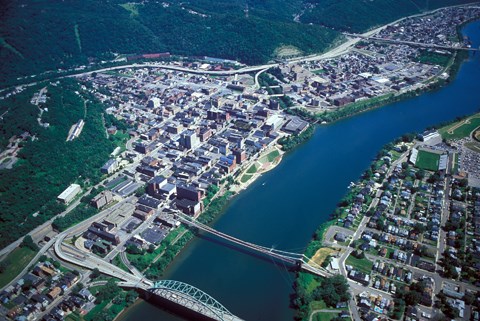Last updated: August 7, 2020
Article
Lewis in Wheeling, West Virginia

Photo: Wheeling, West Virginia, by Jim Wark. Used with permission.
Sure enough, the keelboat got stuck on riffles many times moving downstream from Pittsburgh, but the boat and crew finally arrived 100 miles later at Wheeling, Virginia (now West Virginia). Lewis found “a pretty considerable Village of fifty houses…it is situated on the east side of the river on an elivated bank; the landing is good…” Upon arrival, Lewis sought out Mr. Caldwell, the merchant to whom he had cosigned the supplies he had shipped overland from Pittsburgh.
Lewis then met with Thomas Rodney, a veteran of the Revolutionary War, whom Thomas Jefferson had appointed to oversee land claims in the territory. Rodney visited the keelboat, Lewis showed off his air rifle, and they talked.
The next day, September 8, 1803, Lewis wrote a progress letter to President Jefferson, then met Dr. William Patterson, the son of one of Lewis’s pre-trip tutors in Philadelphia. He offered Patterson a place on the Expedition, to act as the Corps’ physician. But when it came time to depart the next afternoon, the doctor never showed up. No one clearly knows why. Lewis also added another pirogue to his fleet, with a man to handle it.
Shortly after departing Wheeling, the men were pleasantly surprised to find the Ohio River to be broader and deeper, and lined on both sides with hardwood trees.
